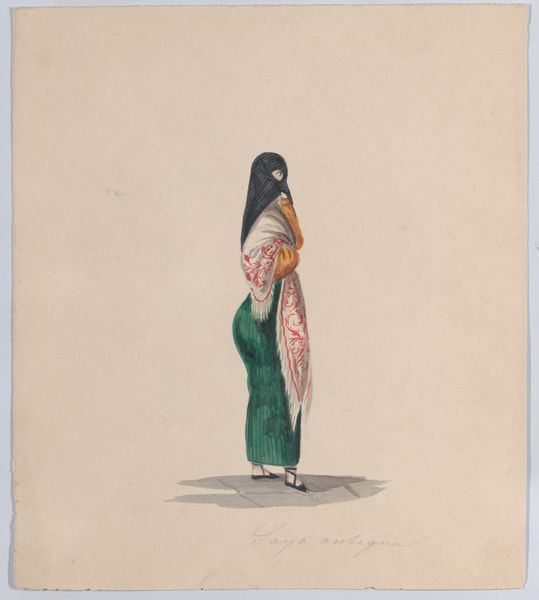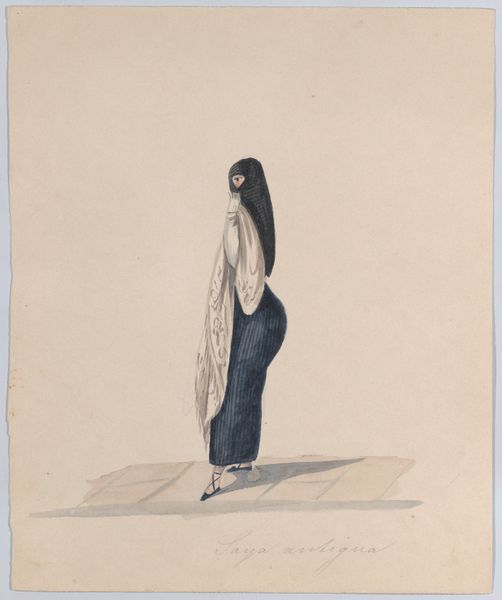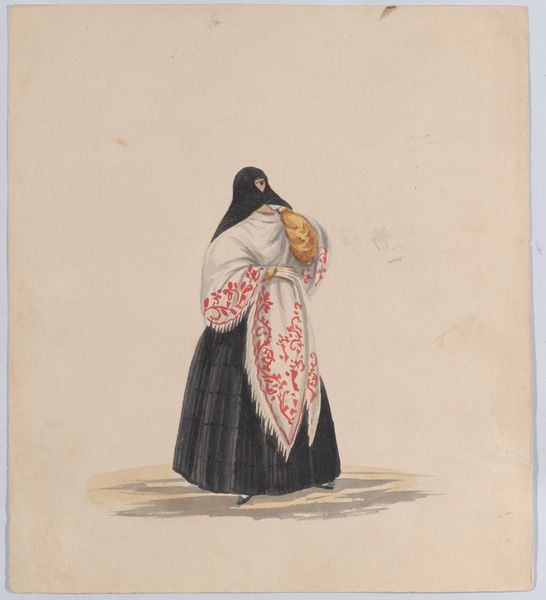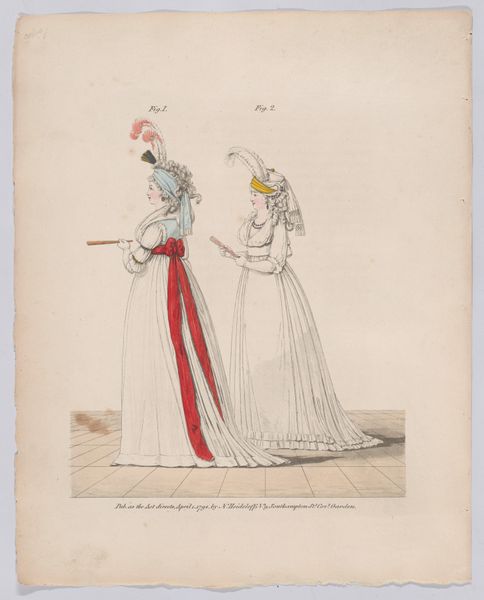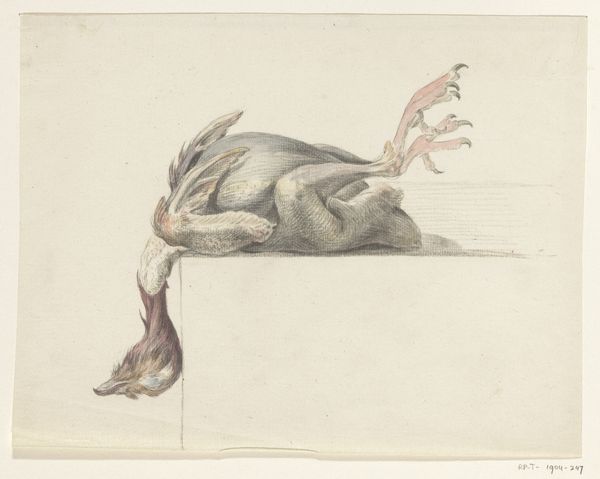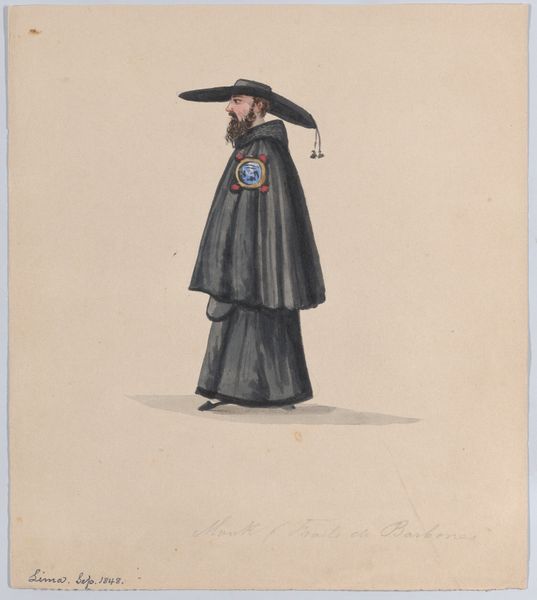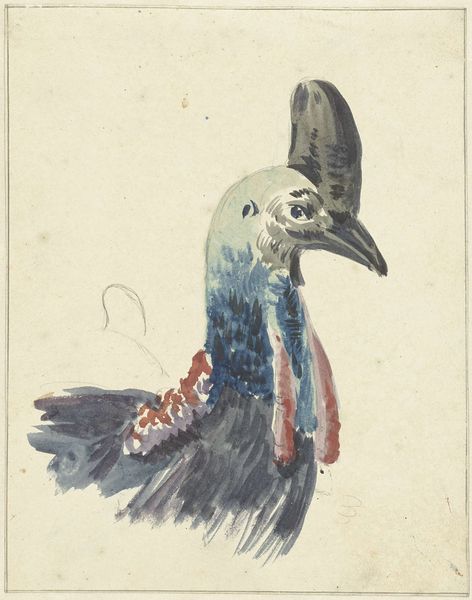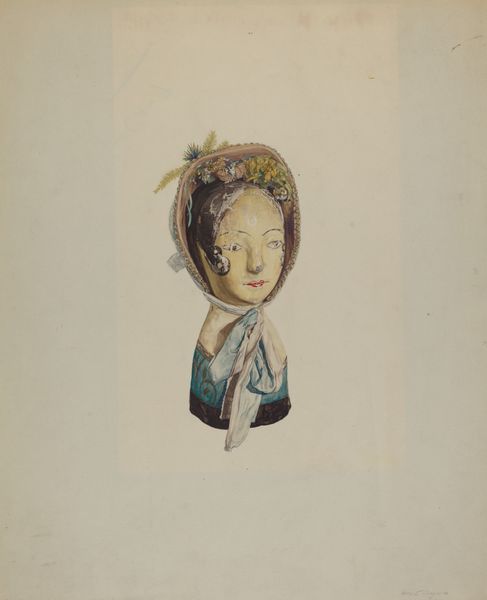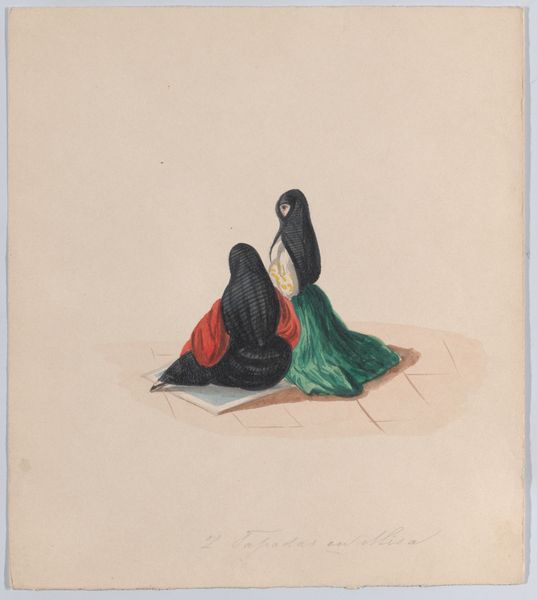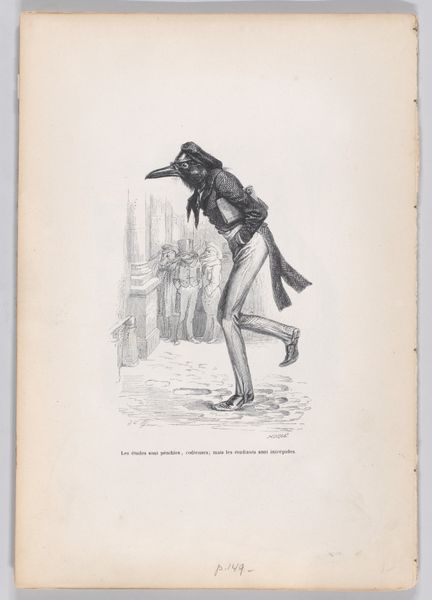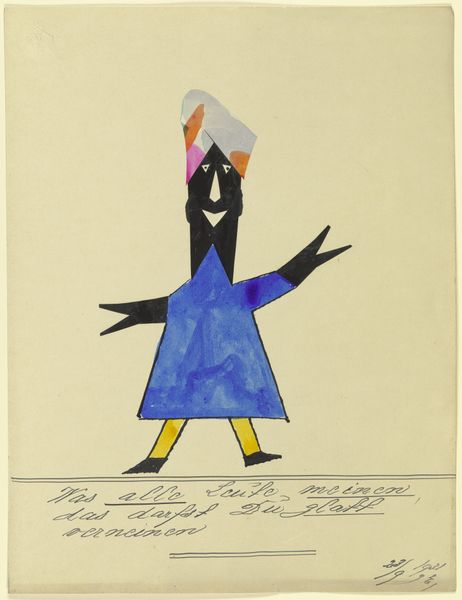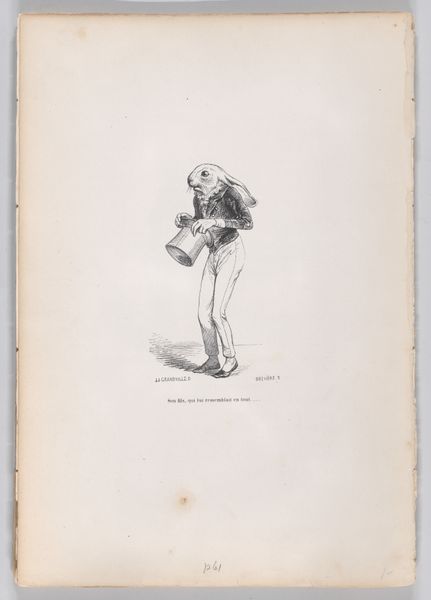
A woman getting into her saya viewed from behind, from a group of drawings depicting Peruvian dress 1843 - 1853
0:00
0:00
drawing, coloured-pencil, print, watercolor
#
portrait
#
drawing
#
coloured-pencil
# print
#
caricature
#
caricature
#
figuration
#
watercolor
#
coloured pencil
#
genre-painting
#
watercolor
Dimensions: Sheet: 9 1/16 × 8 1/16 in. (23 × 20.5 cm)
Copyright: Public Domain
Curator: Today we are looking at a watercolor and colored pencil drawing by Francisco Fierro titled "A woman getting into her saya viewed from behind, from a group of drawings depicting Peruvian dress," created sometime between 1843 and 1853. It is currently held at the Metropolitan Museum of Art. Editor: My first thought is about the texture here; the almost velvety appearance of the blue fabric, especially. It seems to envelop her. It’s a simple scene but drawn with remarkable care in the depiction of textiles. Curator: Indeed. The work's power lies in its social commentary. The saya, this distinctive overskirt and manto, signaled a specific racial and social positioning in 19th century Peru, often associated with women of mixed Indigenous and European descent. This wasn’t just clothing; it was a marker of identity. Editor: Absolutely. Look at the making. Fierro, though self-taught, meticulously renders each fold of the saya, displaying a material understanding of cloth and garment construction. His printmaking background may play a part in how he delineates such sharp edges, despite using watercolor. How might the ready availability of paper in Lima have fostered this form of social critique through portable imagery? Curator: An important point. Furthermore, consider how Fierro positions this woman—almost anonymous, swallowed by her garment. It hints at the restrictions placed upon women within that societal structure and the constraints placed on indigenous populations more generally. Editor: It makes one wonder about the specific workshop or social circles wherein Fierro created and distributed these images. Were they meant to flatter or satirize? There’s a delicate tension between documenting social reality and perhaps exacerbating class divisions through caricature. Curator: Exactly. And Fierro’s role as a chronicler of everyday life for people on the margins means his work offers insight into resistance and negotiation against cultural oppression. Editor: Considering this context emphasizes how intensely material even the simplest acts of daily life were within this deeply hierarchical society, an economic context in which both clothing and art-making carry specific social weight. Curator: Precisely. These considerations allow us to unpack how art serves as historical testimony as well as a critique of lived reality. Editor: Thinking about Fierro's artwork expands the conversation far beyond just aesthetics.
Comments
No comments
Be the first to comment and join the conversation on the ultimate creative platform.

